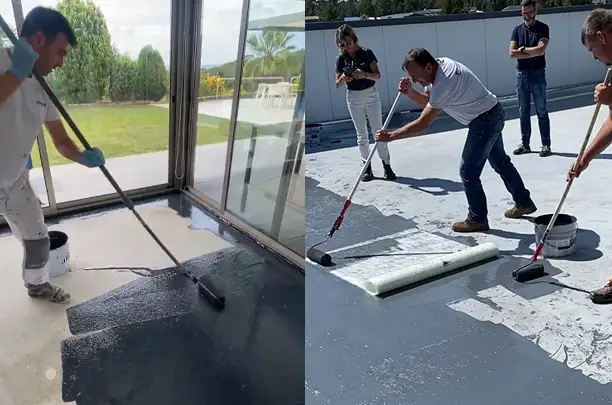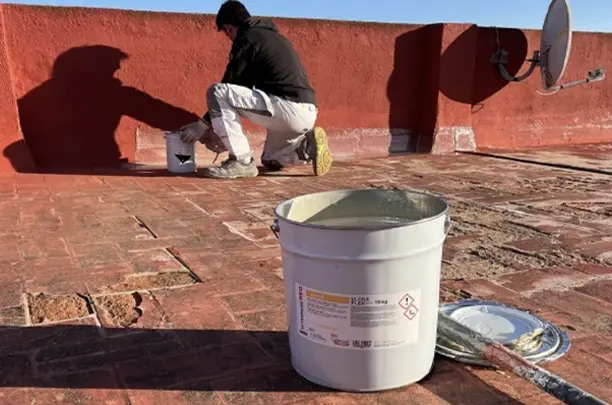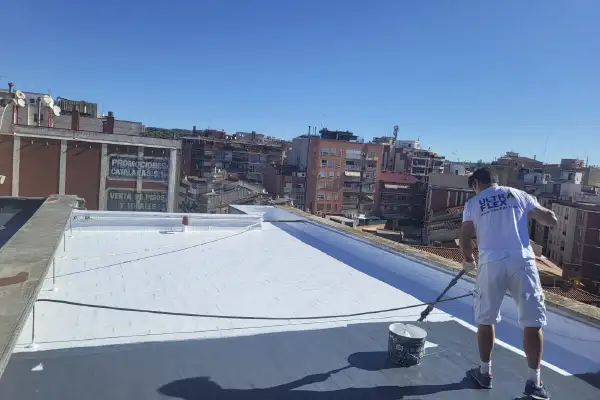In the construction sector, the choice of waterproofing system is crucial to the durability and functionality of any building. For decades, traditional sheet membranes have been the predominant choice.
However, the market is undergoing a transformation, with sustained double-digit growth in liquid waterproofing membranes across Europe.
Barcelona, May 27, 2025. According to a report by Verified Market Reports, the liquid waterproofing market is expected to reach $7.2 billion within the next decade, up from $4.5 billion in 2024.
This steady growth mirrors a significant shift in the construction industry’s preferences, increasingly favoring innovative, efficient, and sustainable solutions.
This trend is no coincidence; high-performance liquid solutions offer substantial advantages that position them as the superior alternative—especially in a context marked by a shortage of skilled labor.
Technical and Practical Advantages
Liquid membranes are fully bonded to the substrate, without seams or overlaps, drastically reducing critical points where waterproofing can fail. Their continuous application makes them especially effective in complex areas such as corners, penetrations, and other detailing elements.
Their high compatibility with different substrates often eliminates the need to remove old membranes, resulting in less waste and lower disposal costs. Applied in thin layers, they avoid overloading the structure and are ideal for refurbishment projects.
A standout example is ULTRAFLEX®, a system developed by Eagle Waterproofing, with a certified service life of over 25 years, approved by institutions such as the British Board of Agrément (BBA) and the European Technical Assessment (ETA). It is also approved by the NHBC, which confirms its suitability. ULTRAFLEX is even approved for green roofs. In addition, it requires no primer, has no waiting time between coats, produces no product waste, and is rainproof immediately after application.

Training on the start of work with ULTRAFLEX®.
Limitations of Traditional Systems
In contrast to this modern and efficient approach, traditional systems show considerable limitations.
Sheet membranes are more complex to install and require highly specialized technical expertise. The final quality depends directly on the skill of the applicator—a growing concern amid the scarcity of qualified professionals.
Furthermore, most of these systems are not walkable and require additional protective layers, increasing both costs and execution times. In some cases, double-layer installation is needed to ensure durability, which means more materials, labor, structural weight, and waste.
Innovation “Made in Eagle Group”
In this context, Eagle Waterproofing Ibérica, the European subsidiary of Eagle Group, has positioned itself as a pioneer in developing next-generation liquid products, designed to deliver maximum efficiency and reliability.
In addition to ULTRAFLEX®, ULTRADRY®,stands out as a revolutionary solution acting as a vapor barrier (Sd = 61), absorbing up to 98% of residual substrate moisture, and resisting up to 10 bars of negative water pressure—all in a single 500g/m² layer. It is ideal as a base for continuous flooring systems on substrates that require a strong moisture barrier. It is also particularly suited for ground floors, basements, elevator pits, and other below-grade structures.

“Today, more than ever, the market needs solutions that not only meet technical requirements but also simplify the construction process and reduce execution risks. Liquid solutions like ULTRAFLEX® and ULTRADRY® meet that need perfectly,” , says Gemma Mogas, Partner and General Manager of Eagle Waterproofing filial in Europe.
A Necessary Shift in Waterproofing
With solutions like those developed by Eagle Group, high-performance liquid waterproofing not only meets current technical demands but also paves the way toward a more efficient, professional, and sustainable future for the construction industry.
Ready to move beyond traditional systems?
Descubre Discover how liquid waterproofing can transform your projects.




